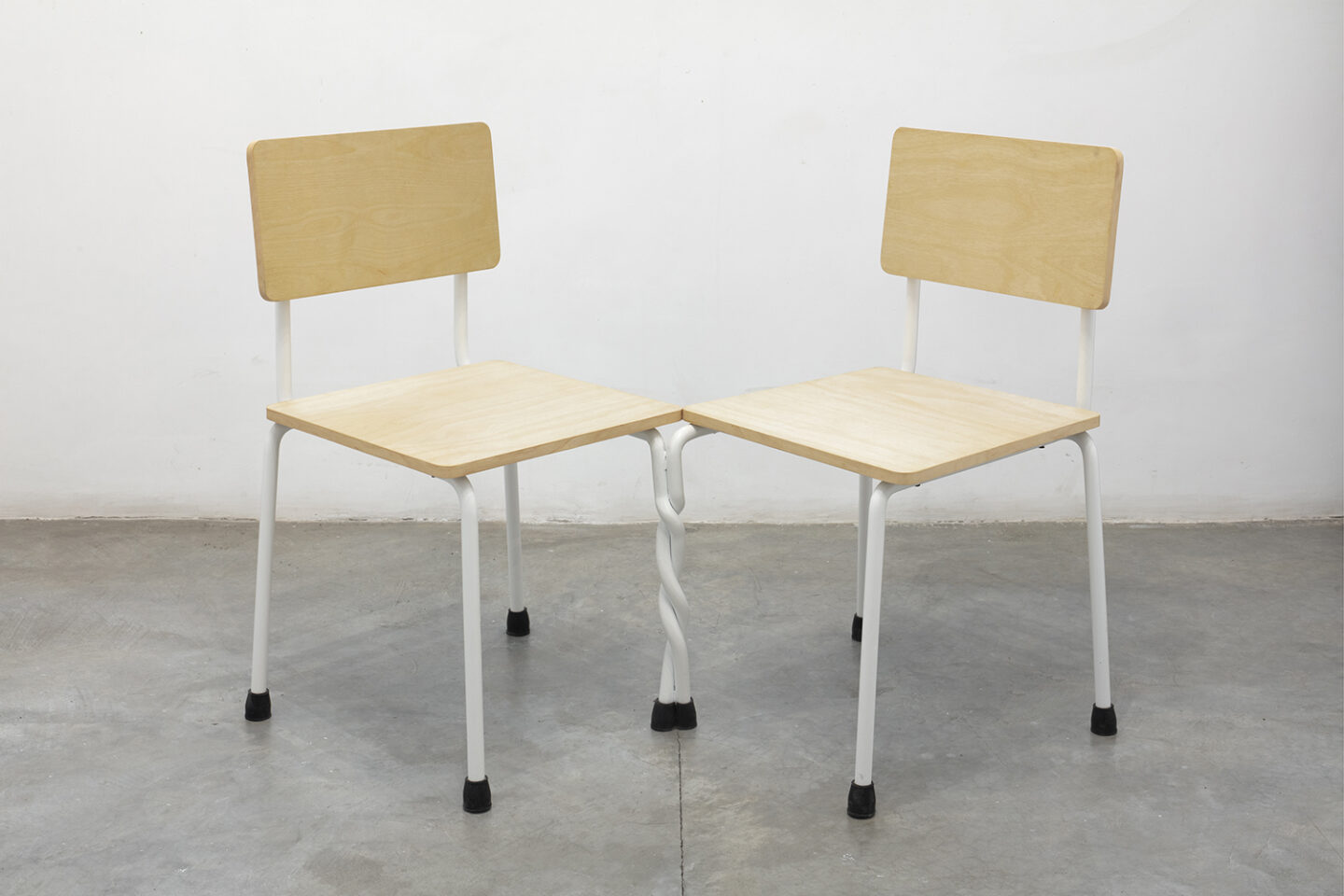
Review
On 'Fe y Alegría' at Galería Agustina Ferreyra, or How I Could Walk Barefoot in This Place
by César Esparragoza
Reading time
4 min
They told me, that an image
Is always worth much more
Than a thousand words and it’s true
That’s why I’m going to draw you
— Fangoria, Geometría Polisentimental
Suddenly, I realize I am not in my room. I've been deceived by comfort and trust. I imagined leaving my shoes on a pile, indistinguishable from the rest. I got confused, and for a moment, I also believed I was in a cantina where the music didn’t play, the snacks were tough, and the furniture either melted or shattered into pieces at the slightest touch or breath.
When I say I’ve been deceived, I say it with a barely noticeable smile; deliberately, because of the embarrassment of feeling exposed here too. The pieces displayed in Fe y Alegría [Faith and Joy], curated by Agustina Ferreyra y Octavio Gómez Rivero at the Agustina Ferreyra gallery, seem to run parallel to the experiences of those of us who have failed the hegemony of love. The exhibition unfolds as we recognize that we have desired harm, that we have been clandestine. That we desire solitude, but sometimes also wish to feel surrounded or to melt like wax into a mass of even warmer skins. Sometimes everything and more (or even less), all at once.
However, the exhibition does not maintain any dichotomy or hierarchy between these concepts. Instead, it functions like a polyhedron of feelings—of course, not static, constantly shifting its number of edges. Thus, Fe y Alegría is not a replica of our relationships with another, but rather an archaeological arrangement of our emotions.
_10_11_01%E2%80%AFa_m_.jpeg?alt=media&token=a6c998ad-8eea-4784-bd03-2dd1970df39a)
The show is deceptive, in the best sense of the word. This space embodies the everyday act of presence—or, better put, presence in company. It is a collaborative exhibition in which the participating artists offer us a glimpse into intimacy through small tears in the fabric that separates the object-space from the spectator-companion. Sometimes reversing the roles, as in Organ roll call by Nicole Chaput (2024).

The pieces in the exhibition can appear anywhere in our lives, and this is what makes us feel them closer to us. It might be that a memory materializes, of spending hours talking with someone in a bar until the chair begins to mold to our body, as in Rompiendo nueces con los codos (Breaking Nuts with Elbows) by Samuel Nicolle (2024), or the sensation of sharing a seat with someone so close that the tensions become unavoidable, our hair stands on end at the words of the person in front of us, and their breath surrounds us, brushing our ears, running down our spine, and gently gripping our hips, as in Alan Sierra's functional sculpture Los empiernados (Intertwined) (2024).

Speaking of breath, we also encounter Breath Play I, a piece by the duo BABA (2024), which becomes one of the many climactic moments we pass through during the exhibition. This climax, understood as the confrontation and struggle between pleasure and release, the explosion of oneself, and the restraint against our body fragmenting into polished crystals, held by hands that barely allow us a few seconds to breathe between kisses and scratches.
_10_12_43%E2%80%AFa_m_.jpeg?alt=media&token=713f8211-25fa-48e0-ad42-64c9a448aa47)
Words slowly run out for me, but the feeling lingers (at least until January 11)*. In this same way, Fe y Alegría serves as evidence that even in silence, in distance, in remnants and disputes, we inhabit our spaces in the company of our emotions and the grounding touch of everything around us.
Translated to English by Luis Sokol
*The gallery will be closed from December 23rd to January 4th.
Published on December 21 2024